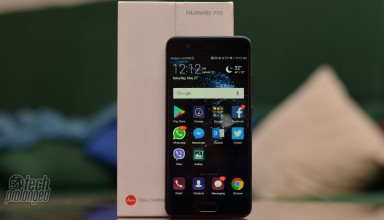Introduction - Huawei P10
Introduction to Huawei P10
Globally announced back in February, Huawei P10 and its larger counterpart – Huawei P10 Plus were launched in Pakistan later in March. Taking a lot from the predecessor Huawei P9, the new camera centric flagship from the Chinese brand has shown pretty much obvious improvements.
What we have stopped seeing from the lineup, is the term “Ascend” since the launch of Huawei P8, and that I believe has been a good move for the smartphone maker. But when it’s the P series from Huawei, then it’s the camera first, that we talk about. With Huawei P10, the dual-camera produced in Leica’s collaboration is also better in performance and results as well as the system provides rich features to work with this impressive camera. There are quite a few issues that we’ll talk later in the review.
First impressions of Huawei P10 were astonishing – whether it’s the handling, design or the display. Specially one of the reasons for anyone who’d prefer Huawei P10 over the Mate 9, is its compact build. Even though Huawei P10’s dual-camera is an improved system from its predecessor, it’s pretty much same as featured in Huawei Mate 9. Sure the one in P10 has an edge with its latest software optimized for the hardware. Mate 9, however, also has received the latest Android software with globally acclaimed EMUI 5, so we should have both delivering pretty much similar results. But both target different desiring customers – large screen or compact screen, easy enough to choose.
Well, Huawei P10 indeed has an improved front-facing camera that also brings software enhancements and features like smart mode and Leica effects – one such is the “portrait mode” which previously we have seen only limited for the rear/primary cameras in Mate 9 or in Huawei P9. However, it doesn’t perform exactly like the rear camera – we’ll talk about that later as well.
One of the first things you’d notice on a Huawei device is the home button on the front that has an embedded fingerprint scanner. That actually first appeared on Huawei Mate 9 Pro but that wasn’t widely available so I’d say Huawei P10 to be the first to carry this form factor as it has a greater reach globally. How could it make you feel awkward with its multi-functioning gestures – keep that bit a little later in design section.
Related: See Full Specifications of Huawei P10
Quick Overview
Huawei P10 was launched globally for the price of €649 that makes it around PKR ~73,000 and it instantly gained criticism for being an expensive device. The price was similarly high in UK as well, however in markets like Pakistan, Huawei kept the price way lower at PKR 60,000 which was an attractive deal at the time of launch.
| PROS | CONS |
|---|---|
|
|
Huawei P10 – Prominent Features
Huawei P10 is powered by the proprietary Kirin 960 octa-core chipset containing eight ARM cores and the outstanding Mali G71 GPU. Like with most of its flagship devices, Huawei ships a variety of models of Huawei P10 depending on regions with their carrier supported frequencies. These variations also have storage distinctions as well. But all of them support only 4GB of RAM. This time there are total of five variants
- Three variants only for China market — Dual SIM – VTR-AL00 (64GB/128GB), VTR-TL00 (64GB)
- Two for US/Europe market — Single SIM – VTR-L09 (32GB/64GB)
- Two for Global — Dual SIM – VTR-L29 (32GB/64GB)
Expandable storage is there via microSD card with a dedicated slot for single SIM variant. All dual SIM variants have hybrid slot that provides option to use 2 SIM cards with no microSD card or 1 SIM + 1 microSD card. checkout the design section of this review.
If you have been following us, you’d know that Huawei recently has been into controversy of using different kind of storage chips in Huawei P10. That resulted in variations in overall system performance where the devices with eMMC 5 chip performed poorer compared to the devices with UFS 2.1 or UFS 2.0. We are glad that the unit we received is not that poorest among the lot but right in the middle as UFS 2.0. Hence I believe, in Pakistan, you would be buying the same devices – see section performance.









